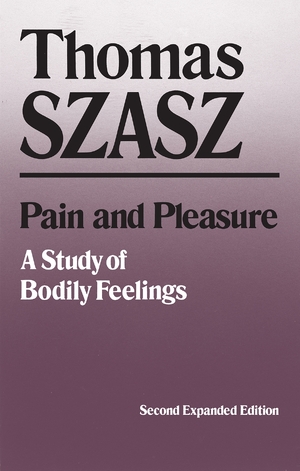In this work Dr. Szasz dispels popular and scientific confusion about what pain and pleasure actually are. Demonstrating the doubtful value of such distinctions as “real” and Imagined” pain, or “physical” and “intellectual” pleasure, he analyses the basic concepts-psychological, philosophical, and sociological-involved in bodily feelings and discusses how these feelings are communicated. Some of the subjects discussed in Pain and Pleasure include: self-mutilation, sexual satisfaction, “hysterical anesthesia,” false pregnancy, laughter, homosexuality, and dream analysis.

